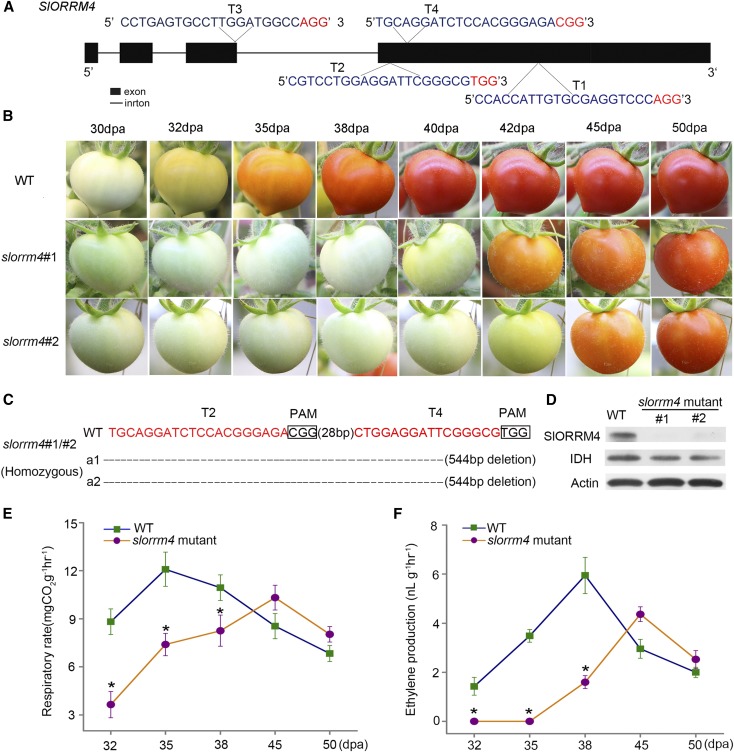Figure 3.
Loss of SlORRM4 function caused great delay of tomato fruit ripening. A, Schematic illustration of four targets in the SlORRM4 genomic sequence. B, slorrm4#1 and slorrm4#2 displayed delayed fruit ripening compared with the wild type (WT). C, Editing analysis of T2 and T4 sites of slorrm4#1 and slorrm4#2 mutants. Red letters indicate the target site, dashes represent deletions, and small rectangular frames indicate the protospacer adjacent motif (PAM). D, SlORRM4 protein expression was inhibited in the slorrm4 mutant. Isocitrate dehydrogenase (IDH) and Actin were the internal controls for mitochondrial protein and nucleocytoplasmic protein, respectively. E, Respiratory rate was reduced and delayed in slorrm4 mutants. Asterisks indicate P < 0.05 (Student’s t test). F, Ethylene production was reduced and delayed in slorrm4 mutants. Asterisks indicate P < 0.05 (Student’s t test).

